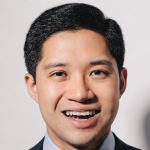At the U.S. Supreme Court (photo by David Lat).
Let’s talk about the Supreme Court. No, not the juicy merits opinions that are finally starting to hit, but the juicy law clerk hiring news we have not yet covered in these pages. There are several reasons why now is an opportune time.
First, it has been forever since our last comprehensive SCOTUS clerk hiring roundup, published back in October 2018. And the new crop of clerks, for October Term 2019, will start at One First Street next month — so let’s get their names out there before their official start at the Court.
Second, it’s a good time to talk about SCOTUS clerk hiring — and SCOTUS feeder judges — because law clerk hiring in the lower courts, pursuant to the new (or resurrected) Law Clerk Hiring Plan, is now in full swing. If you’re a law student in the privileged position of choosing between two or more federal clerkships, which judge is the bigger feeder — i.e., which judge has a stronger ability to send you into a SCOTUS clerkship — could be a relevant factor for your decision.
Third, Supreme Court clerk hiring has been in the news — specifically, Justice Brett Kavanaugh’s hiring of Sophia Chua-Rubenfeld, daughter of Yale Law School professors Amy “Tiger Mother” Chua and Jed Rubenfeld, as a law clerk for October Term 2019. After I tweeted this news, controversy erupted, with many angry or critical tweets, blog posts, and op-eds appearing in response. (The acrimonious state of our discourse, reflected in these reactions, is something I don’t miss in my new life as a legal recruiter.)
Here’s an abridged version of the brouhaha. His critics attacked Justice Kavanaugh’s hiring of Chua-Rubenfeld as “rewarding” Professor Chua for her high-profile endorsement of his SCOTUS candidacy — especially her describing, in a widely discussed Wall Street Journal op-ed, then-Judge Kavanaugh’s longtime mentorship and support of women.[1]
To get the flavor of the criticism of both Justice Kavanaugh and Professor Chua, here’s an excerpt from a CNN op-ed by Kate Maltby:
For many in the establishment — and not just Trump loyalists — the corruption is the point. The nepotism is the point. Appointing the daughter of the powerful woman who may have helped your nomination — it’s the latest way to “own the libs.” Kavanaugh wants us to know he simply doesn’t care what we think of him. He’s won.
See also, e.g., Jeremy Stahl in Slate — who pointed out how, at the time of Chua’s original op-ed, Elie Mystal in these pages (correctly) predicted that Sophia Chua-Rubenfeld would someday clerk for Justice Kavanaugh, giving rise to the appearance that Chua successfully curried favor with the justice in order to secure a SCOTUS clerkship for her daughter.
Now, I don’t want to get too embroiled in this dispute — remember, I have a new career now, which thankfully does not involve getting into political debates — but allow me to make a few brief observations.
1. In spring 2016, at the end of her 1L year at Yale Law School, Sophia Chua-Rubenfeld was hired to clerk for then-Judge Kavanaugh on the D.C. Circuit, for the 2018-2019 clerkship year. This was more than two years before Kavanaugh was nominated to serve on the Court. Chua-Rubenfeld had excellent credentials: Harvard for college, ROTC, and Yale for law school, where she had a perfect transcript. (Yes, Yale has grades, the same basic system as Harvard and Stanford — Honors, Pass, Low Pass, Fail — and it’s quite difficult to graduate without at least one or two “P” grades.)
2. Chua-Rubenfeld’s parents were not involved in her hiring; she had three other professors as her recommenders. (But sure, her parents having dealt with Kavanaugh in their capacity as clerkship advisors and recommenders for other YLS students undoubtedly helped her application get noticed; the power of connections to open doors in the legal profession is nothing new.)
3. After Judge Kavanaugh became Justice Kavanaugh, Chua-Rubenfeld became an “orphaned” clerk — i.e., a clerk without an appellate clerkship. She applied to the newly confirmed Judge Britt Grant (11th Cir.) — a former Kavanaugh clerk herself, by the way — and got the job. Chua-Rubenfeld is currently clerking for Judge Grant in Atlanta.
4. Folks who follow SCOTUS clerk hiring know that it’s quite common for elevated judges to eventually “bring up” their orphaned clerks to join them at SCOTUS (sometimes after helping them find lower-court clerkships where they can get some training in the interim).
From Professor Dan Epps (read the whole thread, noting that others, such as Justice Sotomayor, have done the same):
5. Justice Kavanaugh followed this standard practice with at least three other “orphaned” D.C. Circuit clerks of his. In the lists of October Term 2019 and October Term 2020 clerks below, you’ll notice at least three other clerks who were originally hired to clerk for Judge Kavanaugh on the D.C. Circuit: Trenton Van Oss (Harvard 2017 / Friedrich (D.D.C.) / Grant), Tyler Infinger (NYU 2016 / Rao), and Zoe Jacoby (Yale 2019 / Barrett).
So I’m not as inclined as others to see Justice Kavanaugh’s hiring of Sophia Chua-Rubenfeld as some nefarious form of “payback” for Amy Chua having his back during his bruising confirmation battle. And he certainly didn’t lower his standards and hire an unqualified candidate for such a purpose. Even Kate Maltby, who criticizes both Kavanaugh and Chua harshly in her CNN piece, reports that Chua-Rubenfeld’s “[c]ontemporaries at Yale Law School have told me she’s genuinely brilliant.”
But yes, I will freely concede that Kavanaugh’s hiring of Chua-Rubenfeld is… not a good look. If “hindsight is 20/20,” here’s what I’d say post-Lasik (echoing some of the points made by Maltby and also by Vivia Chen):
1. In hindsight, perhaps Sophia Chua-Rubenfeld should have gone to a different law school — like her younger sister, Lulu Chua-Rubenfeld, who is headed to Harvard Law School (the alma mater of her parents, but not where they teach).
2. In hindsight, as both Maltby and Chen suggest, maybe Sophia should have tried to land a clerkship with a different justice — which she would have had a good shot at, to the extent that anyone has a good shot at a SCOTUS clerkship, given her excellent credentials. (Maybe she could have kept the Kavanaugh clerkship as a “safety,” in the event that she did not obtain a different SCOTUS clerkship.)
3. In hindsight, since Justice Kavanaugh seems to be spreading out his orphaned clerks over at least two Terms, perhaps he should have saved Sophia for OT 2020, when there might have been less of an angry reaction — because the passage of time helps with such things. Had this happened a year from now, there would have been less outrage.[2]
But again, this is all hindsight. And on item #3, it’s not clear that Justice Kavanaugh could have deferred Sophia to OT 2020, even if he had wanted to.
As some readers might recall, Sophia Chua-Rubenfeld, a First Lieutenant in the U.S. Army (she did ROTC in college), was originally scheduled to have started her three-year, active-duty service commitment this year. (This is why, at the time, she responded to Elie’s post by pointing out that she was scheduled to join active-duty JAG after her circuit clerkship.)
It would now appear, based on Chua-Rubenfeld’s imminent clerking at the Court, that the military powers-that-be ultimately agreed to defer her service by a year and have it start in 2020, after her SCOTUS clerkship. It’s not clear that the powers-that-be would have permitted her to finish her circuit clerkship in 2019, serve a year in the Army, go back to clerk for SCOTUS for a year, and then serve two more years — a very disrupted and disjointed schedule, not very conducive to training.
So, to make a long story short, several aspects of the Sophia Chua-Rubenfeld SCOTUS hiring are unfortunate, especially from an optics standpoint. But I’m not as troubled or offended by the situation as many others, especially when the situation is viewed in proper context and in light of historical practice.
Now, on to the lists of Supreme Court law clerks for October Term 2019 and October Term 2020. For true devotees of SCOTUS clerk hiring, many of these hires are old news, since they were tweeted previously over at @SCOTUSambitions (originally the Twitter feed for my novel, now converted to a clearinghouse for SCOTUS clerk hiring news). You can follow that feed for real-time SCOTUS clerk hiring news.
As you can see below, we have the entire roster of OT 2019 clerks except for two clerks to Justice Alito and one clerk to Justice Gorsuch. So there’s a good chance that, for a second year in a row, an Alito clerk will be the subject of a special profile in these pages as ATL’s “Mr. Irrelevant.” (Last year the honor went to David Casazza (Harvard 2015 / Elrod).)
If you have any corrections to this information, or if you have any hiring news I have not yet reported, please reach out by email or text (917-397-2751). Please include the words “SCOTUS Clerk Hiring” in your email or text message, perhaps as the subject line of your email or the first words of your text, because that’s how I locate these tips in my overwhelmed inbox Thanks!
[1] Chua’s WSJ op-ed appeared before Dr. Christine Blasey Ford alleged that Brett Kavanaugh had sexually assaulted her when they were teens (accusations that Kavanaugh vehemently and repeatedly denied). But Chua never disavowed the op-ed — and letting her daughter clerk for Kavanaugh suggests to me that Chua stands by her words.
[2] It seems that his colleagues at the Court aren’t holding Justice Kavanaugh’s rocky confirmation against him. Justice Ruth Bader Ginsburg, the liberal icon also known as the #NotoriousRBG, recently gave him props in her speech at the Second Circuit conference for his clerk hiring practices: “Justice Kavanaugh made history by bringing on board an all-female law clerk crew. Thanks to his selections, the Court has this Term, for the first time ever, more women than men serving as law clerks.”
OCTOBER TERM 2019 SUPREME COURT CLERK HIRES (as of June 18, 2019)
Chief Justice John G. Roberts
1. Zaki Anwar (Harvard 2017 / Sutton / Srinivasan)
2. David Beylik (Harvard 2018 / Kavanaugh / Friedrich (D.D.C.))
3. Megan Braun (Yale 2016 / Brinkema (E.D. Va.) / Katzmann / Bristow Fellow)
4. Joseph Falvey (Yale 2017 / D. Friedrich (D.D.C.)/ Griffith)
Justice Clarence Thomas
1. Caroline Cook (Chicago 2016 / Sykes / Katsas)
2. Brian Lipshutz (Yale 2015 / W. Pryor / Katsas)
3. Matt Rice (Berkeley 2016 / Ikuta)
4. Laura Wolk (Notre Dame 2016 / J.R. Brown / Hardiman)
Justice Ruth Bader Ginsburg
1. Alyssa Barnard (Columbia 2015 / Nathan (S.D.N.Y.) / Katzmann)
2. Marco Basile (Harvard 2015 / Watford / Barron)
3. Susan Pelletier (Harvard 2016 / Garland)
4. Michael Qian (Stanford 2016 / Garland / Bristow Fellow)
Justice Stephen G. Breyer
1. Celia Choy (Yale 2012 / Rakoff (S.D.N.Y.) / Katzmann)
2. Dahlia Mignouna (Yale 2016 / Srinivasan)
3. Nicholas Rosellini (Stanford 2016 / C. Breyer (N.D. Cal.) / Friedland / Cuellar (Cal.))
4. Eugene Sokoloff (Yale 2012 / Sack)
Justice Samuel Alito
1. Richard Cleary (Columbia 2015 / Livingston / Leon (D.D.C.))
2. Jessica Wagner (UVA 2014 / O’Scannlain / J. Smith)
3. ?
4. ?
Justice Sonia Sotomayor
1. Siobhan Atkins (NYU 2014 / Furman (S.D.N.Y.) / Lohier)
2. Nick Crown (Yale 2016 / Ellis (E.D. Va.) / Higginson)
3. Jodie Liu (Harvard 2015 / Livingston / Millett)
4. Anuradha Sivaram (Berkeley 2014 / Thapar (then-E.D. Ky.) / Kozinski)
Justice Elena Kagan
1. Jordan Bock (Berkeley 2017 / Friedland / Chhabria (N.D. Cal.))
2. Alex Miller (Harvard 2017 / Moss (D.D.C.) / Griffith)
3. Mica Moore (Chicago 2017 / W. Fletcher / Chhabria (N.D. Cal.))
4. Zayn Siddique (Yale 2016 / D. Pregerson (C.D. Cal.) / Tatel)
Justice Neil M. Gorsuch
1. Michael Francisco (Cornell 2007 / Tymkovich)
2. Kelly Holt (Chicago 2017 / Wilkinson)
3. Stephen Yelderman (Chicago 2010 / Gorsuch)
4. ?
Justice Brett M. Kavanaugh
1. Audrey Beck (Notre Dame 2017 / Larsen / Sutton)
2. Sophia Chua-Rubenfeld (Yale 2018 / Grant)
3. Trenton Van Oss (Harvard 2017 / Friedrich (D.D.C.) / Grant)
4. James Xi (Stanford 2017 / Sutton)
Justice John Paul Stevens (retired)
1. Michael Knapp (Harvard 2016 / Gleason (D. Alaska) / Garland)
Justice Anthony M. Kennedy (retired):
1. Clayton Kozinski (Yale 2017 / Kavanaugh)
Justice David H. Souter (retired):
1. Mark Jia (Harvard 2016 / W. Fletcher)
OCTOBER TERM 2020 SUPREME COURT CLERK HIRES (as of June 18, 2019)
Chief Justice John G. Roberts
1. Patrick Fuster (Chicago 2018 / Watford / Chhabria (N.D. Cal.))
2. Benjamin Gifford (Harvard 2017 / Rakoff (S.D.N.Y.) / Katzmann)
3. Stephen Hammer (Harvard 2018 / Sutton / Katsas)
4. ?
Justice Clarence Thomas
1. Phil Cooper (Chicago 2017/ W. Pryor/ Stras)
2. Jack Millman (NYU 2016 / O’Scannlain / E. Carnes)
3. ?
4. ?
Justice Ruth Bader Ginsburg
1. Jack Boeglin (Yale 2016 / Srinivasan / Calabresi)
2. Eliza Lehner (Yale 2017 / Watford / Furman (S.D.N.Y.))
3. David Louk (Yale 2015 / Boasberg (D.D.C.) / Katzmann)
4. ?
Justice Stephen G. Breyer
1. ?
2. ?
3. ?
4. ?
Justice Samuel Alito
1. ?
2. ?
3. ?
4. ?
Justice Sonia Sotomayor
1. ?
2. ?
3. ?
4. ?
Justice Elena Kagan
1. Peter Davis (Stanford 2017 / Srinivasan / Boasberg (D.D.C.))
2. Isaac Park (Harvard 2018 / Srinivasan / Oetken)
3. ?
4. ?
Justice Neil M. Gorsuch
1. Trevor Ezell (Stanford 2017 / Sutton / Oldham).
2. ?
3. ?
4. ?
Hired by Justice Gorsuch for OT 2021: Louis Capozzi (Penn 2019 / Scirica / Wilkinson).
Justice Brett M. Kavanaugh
1. Harry Graver (Harvard 2019 / Wilkinson)
2. Tyler Infinger (NYU 2016 / Rao)
3. Zoe Jacoby (Yale 2019 / Barrett)
4. Megan McGlynn (Yale 2017 / W. Pryor / Friedrich (D.D.C.))
Hired by Justice Kavanaugh for OT 2021: Athie Livas (Yale 2019 / Thapar / Friedrich (D.D.C.)).
Justice John Paul Stevens (retired)
1. ?
Justice Anthony M. Kennedy (retired):
1. ?
Justice David H. Souter (retired):
1. ?
Once again, do you know about a hire not previously reported, or do you have an addition or correction to any of this info? Please share what you know by email or text (917-397-2751). Please include the words “SCOTUS Clerk Hiring” in your email or text message, as the subject line of your email or the first words of your text, because that’s how I locate these tips in my inundated inbox. Thanks!
Earlier:
 David Lat, the founding editor of Above the Law, is a writer, speaker, and legal recruiter at Lateral Link, where he is a managing director in the New York office. David’s book, Supreme Ambitions: A Novel (2014), was described by the New York Times as “the most buzzed-about novel of the year” among legal elites. David previously worked as a federal prosecutor, a litigation associate at Wachtell Lipton, and a law clerk to Judge Diarmuid F. O’Scannlain of the U.S. Court of Appeals for the Ninth Circuit. You can connect with David on Twitter (@DavidLat), LinkedIn, and Facebook, and you can reach him by email at dlat@laterallink.com.
David Lat, the founding editor of Above the Law, is a writer, speaker, and legal recruiter at Lateral Link, where he is a managing director in the New York office. David’s book, Supreme Ambitions: A Novel (2014), was described by the New York Times as “the most buzzed-about novel of the year” among legal elites. David previously worked as a federal prosecutor, a litigation associate at Wachtell Lipton, and a law clerk to Judge Diarmuid F. O’Scannlain of the U.S. Court of Appeals for the Ninth Circuit. You can connect with David on Twitter (@DavidLat), LinkedIn, and Facebook, and you can reach him by email at dlat@laterallink.com.



















